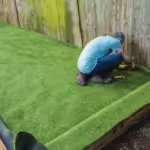Woodworm infestations can pose significant risks to the structural integrity of properties, making them a critical concern for real estate agents and homebuyers alike. Understanding the signs of woodworm activity, the potential implications for property value, and how to address infestations is essential for making informed decisions. This guide aims to provide real estate professionals and prospective buyers with essential information about woodworm infestations.www.shashel.eu
1. Understanding Woodworm Infestations
1.1. What Are Woodworms?
Woodworms are the larvae of wood-boring beetles, primarily belonging to families such as Anobiidae and Bostrichidae. These pests thrive in wooden structures, feeding on the cellulose in the wood, which can lead to significant damage over time. Common species include:
- Common Furniture Beetle (Anobium punctatum)
- Powderpost Beetle (Lyctus species)
- Deathwatch Beetle (Xestobium rufovillosum)
1.2. Signs of Infestation
For real estate agents and homebuyers, recognizing the signs of woodworm infestations is crucial. Key indicators include:
- Exit Holes: Small, round holes on the surface of wood where adult beetles have emerged.
- Frass: Powdery droppings found near exit holes, resembling sawdust.
- Weak or Crumbling Wood: Areas of wood that feel soft or unstable, indicating extensive tunneling by larvae.
- Bubbling or Cracking Finish: Damage to paint or varnish on wooden surfaces can also signal an infestation.
2. Implications for Property Value
2.1. Impact on Structural Integrity
A woodworm infestation can compromise the structural integrity of a property. If left untreated, the damage can escalate, leading to costly repairs and potential safety hazards. This deterioration can significantly affect property value, making it essential for real estate agents to address these concerns upfront.
2.2. Disclosure Requirements
Many jurisdictions require sellers to disclose known pest issues, including woodworm infestations. Failing to do so can lead to legal repercussions and loss of trust with potential buyers. Real estate agents should ensure that all relevant information is accurately communicated during the sale process.
3. Due Diligence for Homebuyers
3.1. Professional Inspections
Homebuyers should consider hiring a professional pest inspector to assess the property thoroughly before purchase. A qualified inspector can identify existing infestations and recommend appropriate treatment options. This proactive approach can save buyers from unexpected costs and stress later on.
3.2. Reviewing Maintenance Records
When evaluating a property, buyers should request maintenance records that document any pest control measures taken. This information can provide insight into the property’s history and the likelihood of recurring infestations.
4. Addressing Woodworm Infestations
4.1. Treatment Options
If an infestation is detected, several treatment options are available:
- Insecticides: Professional-grade insecticides can effectively eliminate woodworms. It’s crucial to follow manufacturer instructions and safety guidelines.
- Fumigation: For severe infestations, fumigation may be necessary to ensure complete eradication of pests.
- Repair and Restoration: Damaged wood may require repair or replacement to maintain structural integrity.
4.2. Preventive Measures
Preventing future infestations is key to maintaining the value of a property. Consider these strategies:
- Humidity Control: Keep humidity levels below 50% to deter wood-boring pests.
- Regular Inspections: Schedule routine inspections to catch potential infestations early.
- Proper Storage: Ensure that wooden items, especially antiques and furniture, are stored in controlled environments.
5. Conclusion
Woodworm infestations represent a significant concern for real estate agents and homebuyers, impacting both property integrity and value. By understanding the signs of infestation, the implications for property transactions, and the available treatment options, real estate professionals can better assist their clients. Homebuyers, armed with this knowledge, can make informed decisions, protecting their investments and ensuring their new homes remain safe and sound. Being proactive about woodworm infestations not only fosters transparency in real estate transactions but also helps maintain the longevity of wooden structures.
